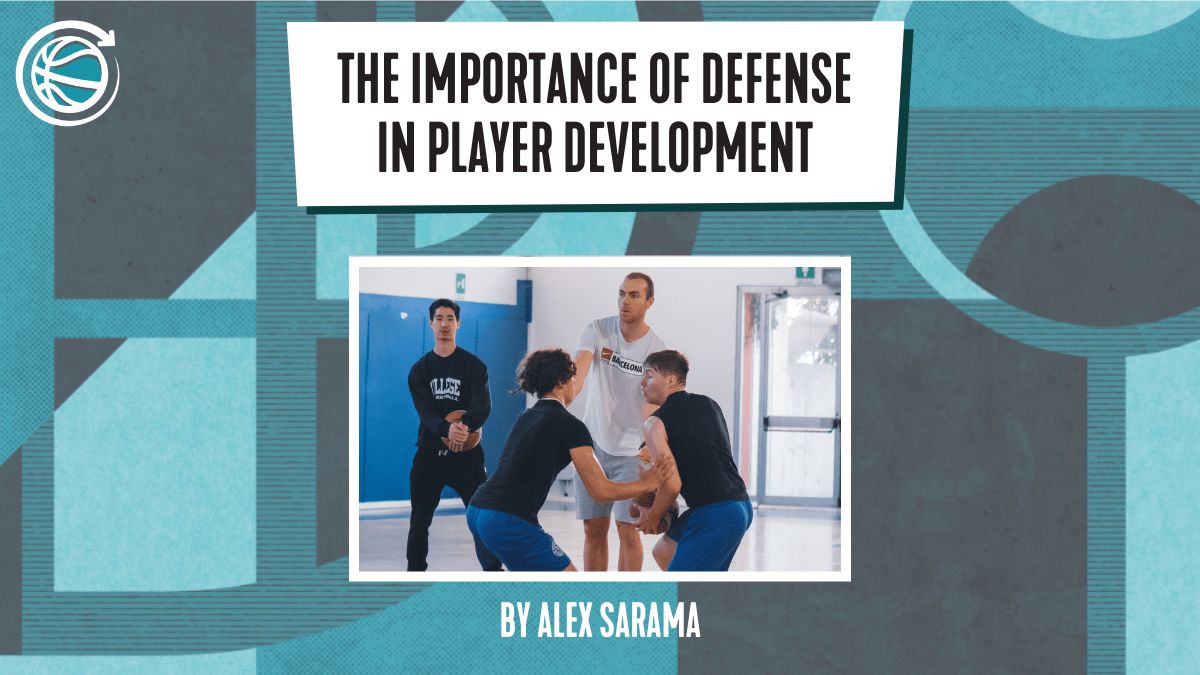The Importance of Defense in Basketball Player Development
Defense is arguably the biggest thing missing within the player development and skills training world. If watching a work-out or scrolling through social media, it is rare to find a work-out where defense is emphasised. Let’s take a dive into why this is so important.
Changing the Perception of Work-Outs
Is improving individual and team defense the job of a skill trainer or player development coach? This is where changing perceptions within the player development industry is critical. Not just moving away from individual sessions to favour small group training formats which allow for more 1-on-1, 2-on-1, 2-on-2 etc, but also shifting the entire focus away from ‘just’ offense.
One question that deserves contemplation is how much of the time within the game will a player be required to defend the ball or perform a close-out, compared to some of the complex dribble or soft touch moves being taught so frequently nowadays? This is one of the reasons we refrain form using the title ‘skills trainer’ at Transforming Basketball. Being a basketball coach means developing multiple components of a player’s game, focussing on both offense and defense. We can’t just neglect an enormous part of the game!
It is therefore critical for coaches to be able to create effective activities which allow for individual and team-wide defensive concepts to be developed. The ability to use a wide array of functional movement solutions to defend the ball is critical, as opposed to repeating one technique over and over again (aka the step slide). No player will ever be able to use such outdated techniques to stay in front of a dynamic offensive player.
When defense is completely neglected – especially at the youth levels – it makes it extremely challenging to develop attunement on the defensive end when players progress to senior basketball. If a player cannot reliably defend the ball, it is very difficult for them to play at any level of senior basketball. If a coach does not address this, then they are doing their players a major disservice. This is where the question has to be asked about the return of investment within the skills training world. Is completing multiple variations of different footwork patterns on a multi-coloured floor mat going to be more conducive than being able to contain a ball handler or ‘cancel’ a pick out of a drop coverage in pick and roll?
Ultimately, coaches should consider how a team’s offense will always be limited in its ability to improve relative to the level of their defense. If the defense is not consistently emphasised, then the offense simply becomes proficient at creating advantages against ineffective defenders. When it comes to the game, the offense may rarely encounter the same scenarios as to what they have become accustomed seeing within practice.
Functional movement solutions are a critical part of playing effective defense: this is where tag games are effective as well as being extremely fun for players of all ages. When it comes specifically to on-ball defensive movement, a focus may be placed on moving in different planes. Through the CLA, specific activities can be created to provide more affordances for moving in a plethora of different ways, similarly to how a defender may move on the defensive end. For instance, coaches may mark out a gate with cones, which the offensive player has to pass through. A defensive player in the middle of the pylons then attempts to tag them as they pass. In addition to activities such as this, lots of 1-on-1 in constrained spaces with an emphasis on defensive stops and scoring can develop some of the functional movement solutions required to be an effective defender.
If you are a trainer or coach interested in focussing more on developing disruptive defensive concepts, here is a quick list of things to consider emphasising through the CLA:
- Allowing for defensive footwork solutions to emerge based on what appears in the game
- Walling up and verticality without fouling
- Chest stops and aggressive ball pressure
- Help and gap positioning
- Close-outs
- Defending the post
- Defending cutters
- Triggers and multiple unique actions
- Verbals
DOWNLOAD OUR SSG BOOK WITH MORE DEFENSIVE IDEAS

Sep 30, 2024
Alex Sarama



